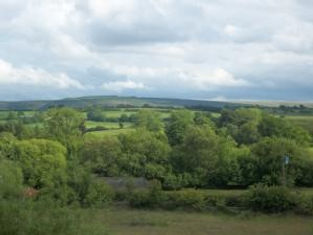


ABOUT LLANWRTYD WELLS
Llanwrtyd is a great base to stay and explore the Cambrian Mountains and in many ways it is a fantastic advertisement for Wales all on its own. It is a mecca for walkers, cyclists and pony trekkers keen to experience the olde worlde charm of the town and the spectacular mountain scenery. Many of the walking and cycling routes in the area follow old Drovers roads, used for over 500 years by farmers selling their livestock in the profitable markets over the border.
Llanwrtyd Wells is famous for holding really quirky events including World Alternate Games, Bog Snorkelling and Man v Horse Marathon. For a small market town, it also boasts an unusally large range of great places eat.
The River Irfon, an upper tributary of the River Wye, flows through the town centre joining the River Wye at Builth Wells. Enjoy discovering the surrounding area where you will find many old Roman roads, ancient standing stones, tiny chapels and churches, stunning scenery and abundant wildlife to explore. Look out for Red Kites soaring above the town and, if very lucky, you well get a glimpse of rare red squirrels on your travels.
Llanwrtyd has a railway station on the Heart of Wales line which runs from Shrewsbury to Swansea. Llanwrtyd Wells Station is a 5 minute walk to Llanwrtyd Hall. Ideal for those walking the Heart of Wales Line.
LOCAL HISTORY
It was the discovery of the mineral waters that originally brought fame and visitors to Llanwrtyd Wells. In 1732, the Reverend Theophilus Evans discovered a rather healthy looking frog sitting in a well. Evans deduced that the water the frog had been living in might have some medicinal qualities. Very soon enough the sulphuric spring at Dol-y-coed was a destination for health tourists from all over Britain.
Nearby springs at Llandrindod and Builth helped to make this portion of the southern Cambrian Mountains famous as a health tourism district and the industry was further strengthened by the expansion of the railways into wales during the 19th century.
Prior to the arrival of the railway in 1868, Llanwrtyd was on a stagecoach route (now the A483) between Swansea and Llandrindod Wells. The arrival of the railway brought visitors to the town in huge numbers from South Wales.
Following the Declaration of War with Germany on September 3rd 1939, the pupils of Bromsgrove School in Worcestershire were evacuated to Llanwrtyd Wells. Bromsgrove School was requisitioned by the War Office, and with the bombing of major towns and cities throughout Great Britain; it was thought the children would be safer in a more rural area. The boys from this 400-year-old senior school were housed and taught in the Abernant Lake Hotel. Parents of these pupils were also gravely concerned for the safety of their younger sons, and at their request Bromsgrove Junior School was born. The Junior School opened in September 1940 at Llanwrtyd Hall for pupils aged between 6 and 12 years old. Other premises were used as classrooms including Ardwyn House, Lasswade Country House Hotel, the Granary Warehouse behind the Bakery and the Sulphur Water Spring at Dol y Coed. The children remained in Llanwrtyd Wells until 1944. As a thank you, the Bromsgrovian Club presented a sum of money towards the building of the Bromsgrove Hall here in Llanwrtyd Wells, and in 1990, a reunion was organised to mark the 50th anniversary of the birth of Bromsgrove Junior School. Offering the Freedom of the Town to Bromsgrove School is to mark the very close association there is between the school and the people of Llanwrtyd Wells, long may that association continue.
Llanwrtyd does have one more claim to fame. The Reverend William Williams of Pantycelyn, Wales' most famous hymn writer and author of 'Guide Me O Thou Great Jehova', composed his magnum opus during his three year curatorship in the town.
